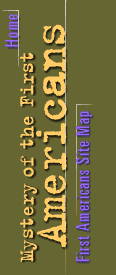
|

|
C. Loring Brace Curator of Biological Anthropology and Professor of Anthropology, University of Michigan The questions "Why do scientists want to study Kennewick Man" and "What would I personally hope to learn from the study of Kennewick Man" are essentially the same from my point of view. The Kennewick skeleton is one of the oldest and most complete human specimens found in the Western Hemisphere and the only one from the northwest edge of the continent, which was almost certainly close to the route taken by the earliest humans to enter the continent. All the archeological and biological evidence points to a Northeast Asian origin for the original human occupants of the Western Hemisphere, but there is increasing reason to believe that different entrants came at different times and derived from different Asian sources. Who were those sources? When did their offshoots come to the Americas? And which Native Americans are derived from which of those sources? Only by studying the remains of the earliest Americans and comparing them to recent and living Native Americans and to recent Asians can we ever provide answers to these questions.
In Polynesia, oral traditions preserve a general knowledge of population relationships going back some 2,000 years. Where written records are kept, one can trace actual relationships back even further than that, as with the descendants of Confucius. Y-chromosome records have shown the continuity of the Cohanim, the Jewish priesthood, via the founding priests of migrant Jewish settlements. But none of these forms of evidence goes back as far in time as the date of Kennewick Man or the roots of the initial settlers in the New World. If we simply bury the evidence, we will never be able to answer the questions of origins and relationships. Does Race Exist? | Meet Kennewick Man Claims for the Remains | The Dating Game | Resources Transcript | Site Map | Mystery of the First Americans Home Editor's Picks | Previous Sites | Join Us/E-mail | TV/Web Schedule About NOVA | Teachers | Site Map | Shop | Jobs | Search | To print PBS Online | NOVA Online | WGBH © | Updated November 2000 |
 Loring Brace
Loring Brace
 While Cohanim priests can trace their male lineage
back several thousand years using Y-chromosome
analysis, no one alive today can trace his or her
heritage back as far as the 9,000-year-old Kennewick
Man.
While Cohanim priests can trace their male lineage
back several thousand years using Y-chromosome
analysis, no one alive today can trace his or her
heritage back as far as the 9,000-year-old Kennewick
Man.